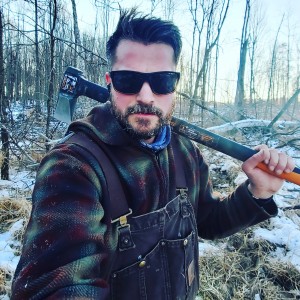-
(0)
-
Bookmark
- Comments (0)
-
(0)
-
Bookmark
- Comments (0)
 JAMES MSASA
JAMES MSASA
Topics: Government / Policies,
REST IN PEACE AFRICAN GIANT. You did a lot for Tanzanian and today you will be burried.
The African Poet,Obert Dube MOURNS President John Magufuli
Tanzania President John Magufuli died on Wednesday, 17th March 2021 from heart complications at a hospital in Dar es Salaam, Samia Suluhu Hassan said in an a...
-
(1)
-
Bookmark
- Comments (0)
AgWiki Commercial - Investing in Tomorrow
This commercial is focused on investing in a better tomorrow through the food we produce and how we produce it.
-
(0)
-
Bookmark
- Comments (0)
 John LaRose Jr.
John LaRose Jr.
Topics: Agriculture Global, Beekeeping, Gardening, World Population, Pollinators, Education,
Bumblebees’ Self-Image Gets Them through Tight Spots
Sridhar Ravi was outdoors with his colleagues on a summer day in Germany when a group of bumblebees grabbed his attention. As the bees made their way from flower to flower, they skillfully flew between obstacles, dodging branches and shrubs. These actions seemed to require a complex awareness of one's physical body in relation to one’s environment that had only been proven to exist in animals with large brains. To examine this, a team of researchers at Australia’s University of New South Wales, Canberra, led by Ravi, set up a hive of bumblebees inside their laboratory. The bees could come and go via a tunnel, which could be partially blocked with an adjustable barrier. Ravi and his team made the gap progressively smaller over time, and observed how the bees’ reactions changed. The study , published in the Proceedings of the National Academy of Sciences , found the bumblebees measured the gap by flying side-to-side to scan it. When the gap became narrower than their wingspan, the bees took a longer time to scan the opening. And then they did something remarkable: they turned their bodies to fly through sideways . Some of the bees’ bodies did bump the sides of the narrowed opening—but every one of the 400 recorded flights through the gap was a success. “Over thousands of years nature has coded insects with some amazing attributes,” Ravi says. “Our challenge now is to see how we can take this and apply similar coding to future robotic systems, enhancing their performance in the natural world.”
-
(0)
-
Bookmark
- Comments (1)
 John LaRose Jr.
John LaRose Jr.
Topics: Precision AG , Dairy, Agriculture US, Agriculture Global, Ag Innovation, World Population,
-
(0)
-
Bookmark
- Comments (0)
 John LaRose Jr.
John LaRose Jr.
Topics: Soybeans, Agriculture US, Vegetables, Sweet Corn, World Population, Regenerative Agriculture,
-
(0)
-
Bookmark
- Comments (1)
 John LaRose Jr.
John LaRose Jr.
Topics: Soil Health, Livestock/Meat, Agriculture US, Cover Crops, Crop Consultant, Agriculture Global, Sustainability, Beef Cattle, Regenerative Agriculture,
-
(0)
-
Bookmark
- Comments (0)
 MATTHEW OEHMICHEN
MATTHEW OEHMICHEN
Interseeding cover crops isnt just about getting green on top; to make an impact it takes more than that. In light of a lot of videos out there talking about cover crops, I make sure to tell you the whole story and what we all need to be looking for. #wisconsinfarmerstrong #protectingthebigeaupleine
https://youtu.be/3qEVU1lF9rI
-
(0)
-
Bookmark
- Comments (0)
 MATTHEW OEHMICHEN
MATTHEW OEHMICHEN
Jason Cavadini is Asst. Superintendent at the UW Ag Research station in Stratford, WIS and heads all the research plots there. The last several years we have been working together though my company Short Lane and our farmerled watershed group EPPIC. In this presentation he showcases the impact interseeded cover crops have on corn silage quality, 60in row corn, analyzing landscape management systems, and using alternative forages...which i had the luck to help him with (well, collecting samples , lol)
https://www.youtube.com/watch?v=uqLwDKPK...
-
(0)
-
Bookmark
- Comments (0)


 Brandon Lance
Brandon Lance
